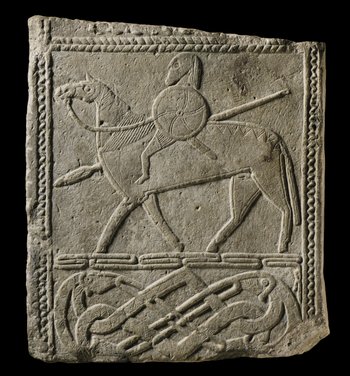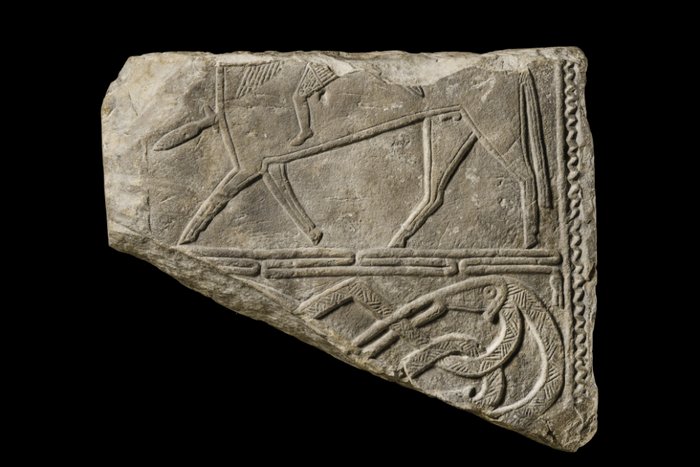Clash of Cultures
The sandstone slabs of Hornhausen
In 1874, three large pictorial stones and several unworked sandstone slabs were found near Hornhausen, Börde district. The motifs, rider, snake, stag, row of people, and plaited band are rendered in the animal style. The total number of documented slabs indicates a smaller structure, possibly an above-ground burial or sacrificial cist, which was smashed and placed in the backfill of a grave around AD 750.
The rider stone is particularly outstanding. The effigy stone, damaged on the top and bottom, has a three-zone face. The upper zone is destroyed. It begins above the plaited band, where the feet of at least four people are still visible, obviously the remains of a scene. Presumably a row of warriors was depicted here as on other Germanic imagery.
The central zone shows the main motif: a bearded rider on a stallion, armed with lance, sword, shield, and probably also a mask helmet. The full armament is a sign of high social status. The riding horse is completely oversized, an indication of its supernatural nature. Below it is a meandering serpent whose head hangs down as if lifeless. The lower zone is filled by a plaited band with four opposing animal heads with long intertwined jaws
Equestrian motifs belong to the Germanic image repertoire of portable and large-scale art. Often the 'entry of the victorious ruler' is depicted in general. Here, however, the giant horse gives the scene a different meaning: The fallen chieftain or Allfather Wodan himself by proxy - in his function as god of war and death - trots to Valhalla on the horse of the gods, Sleipnir. The mythological steed can move on land, water, and air through all worlds, thus also in the realm of the dead.

